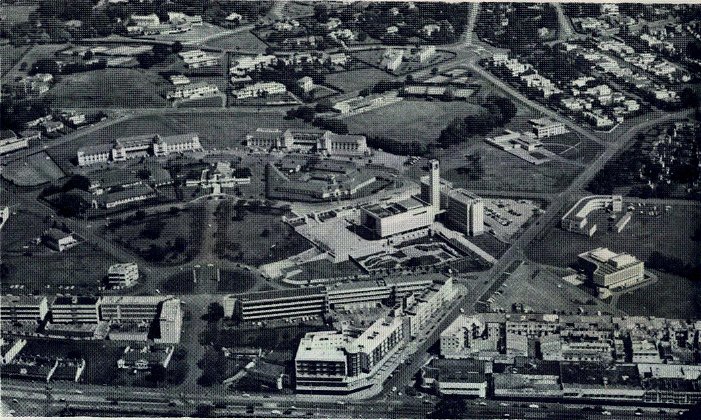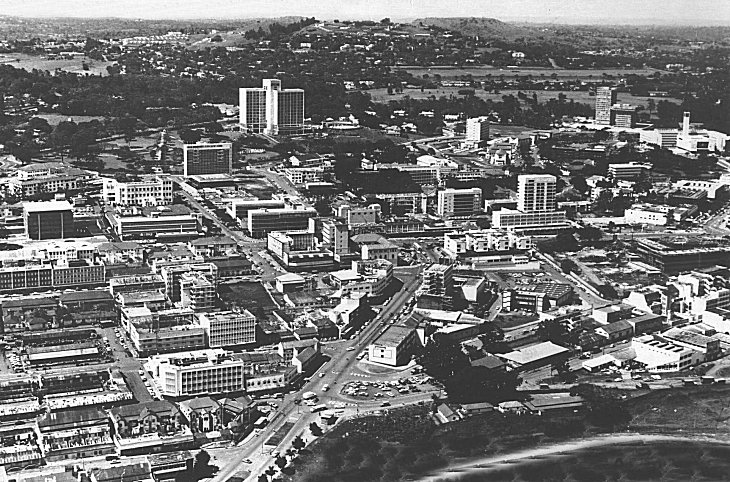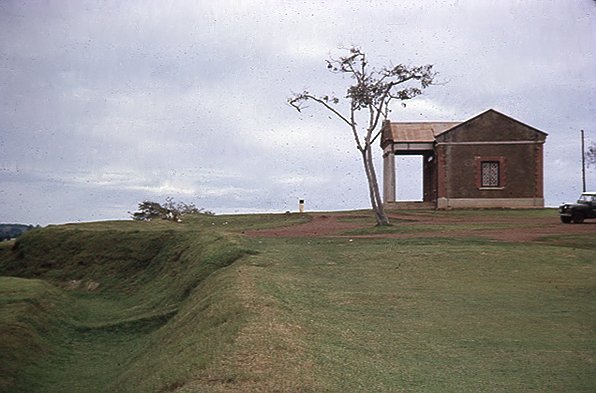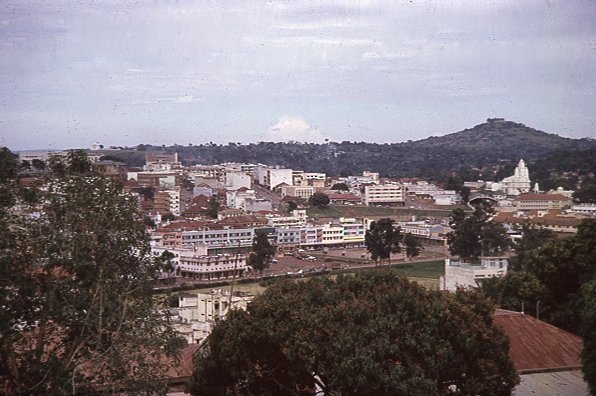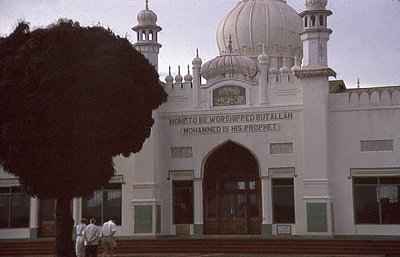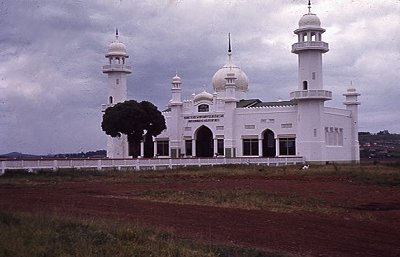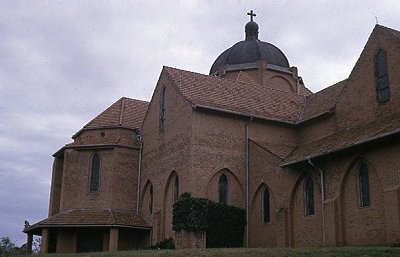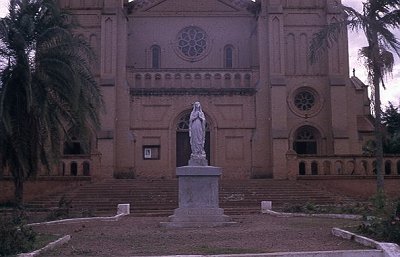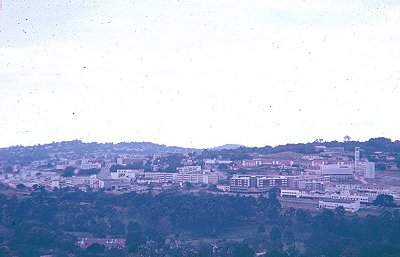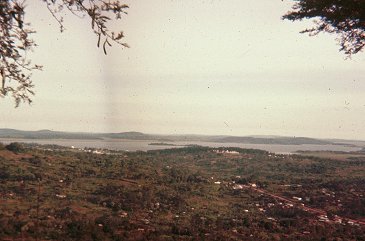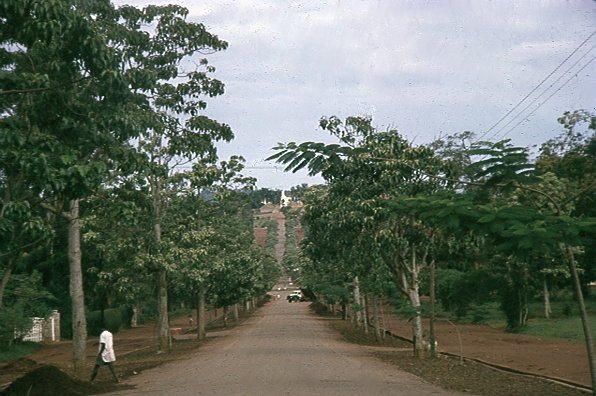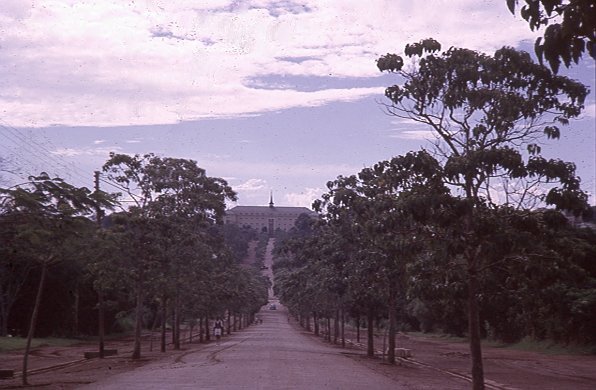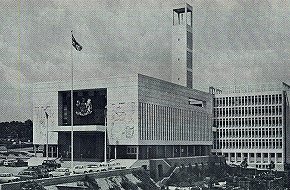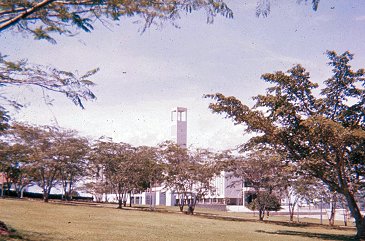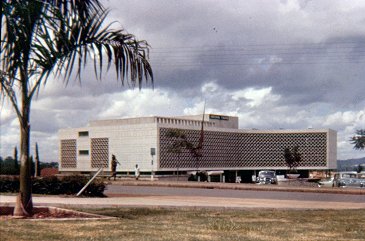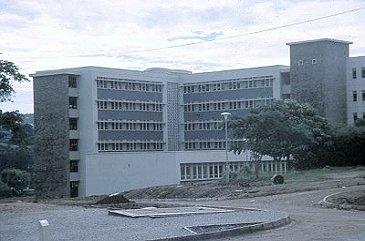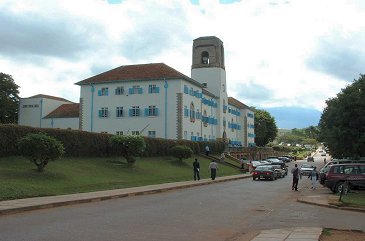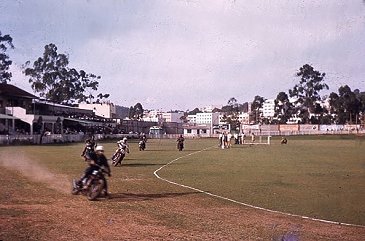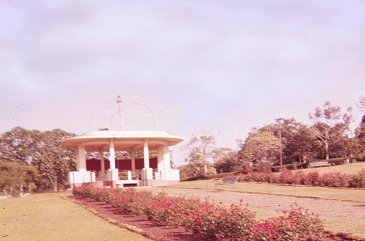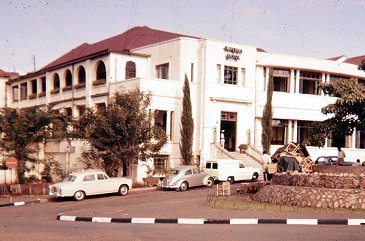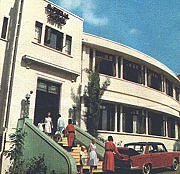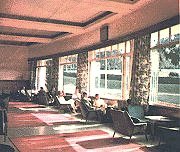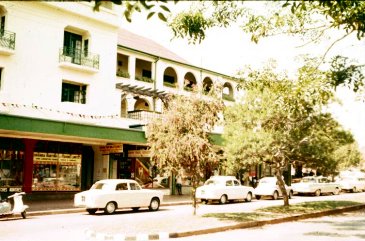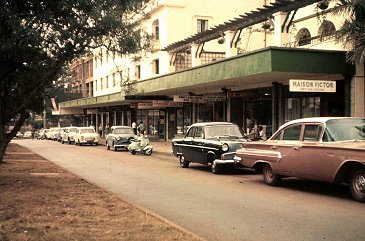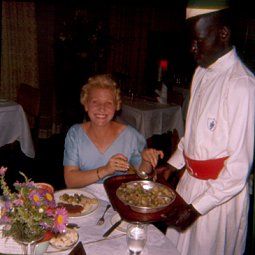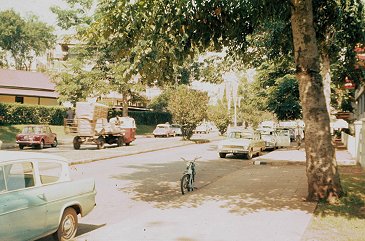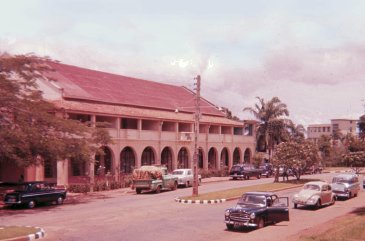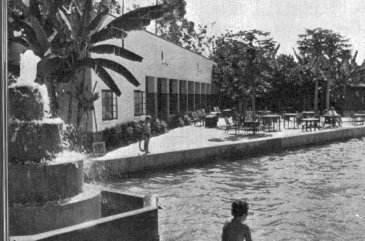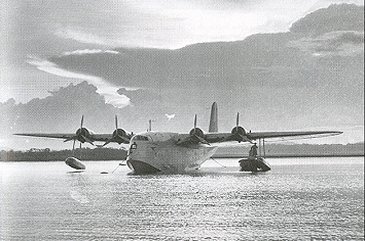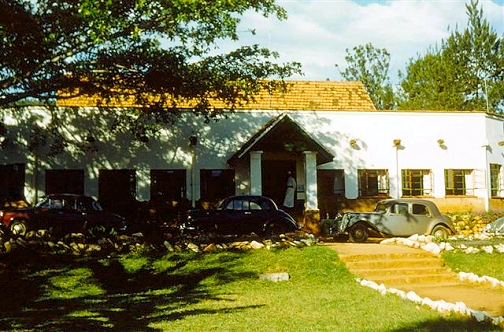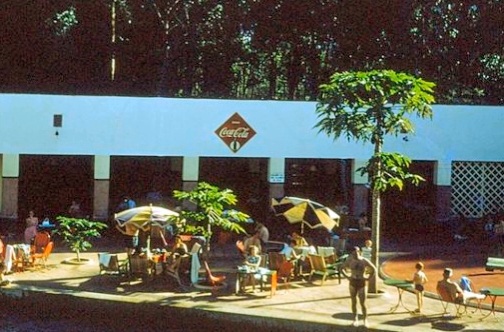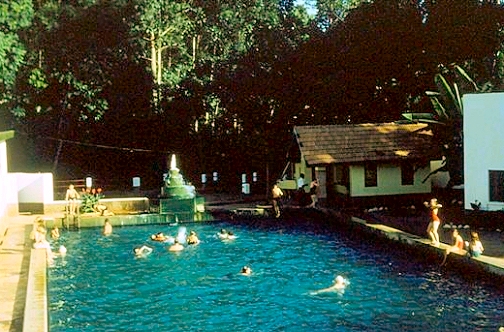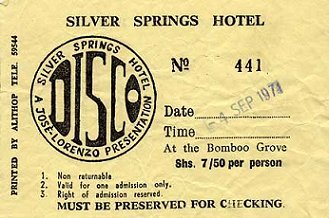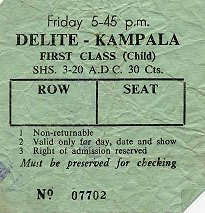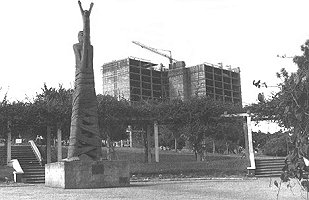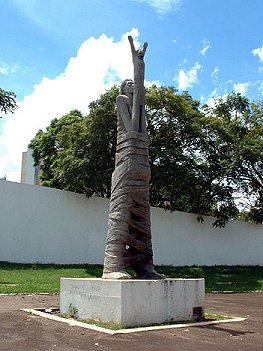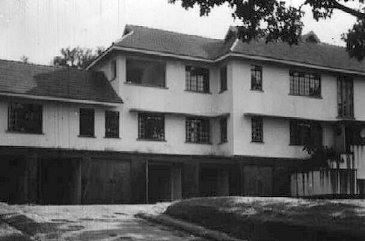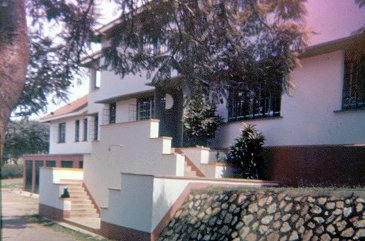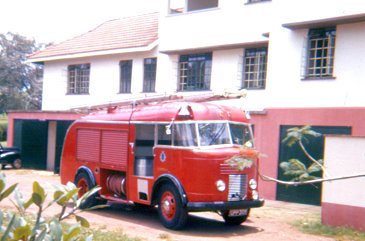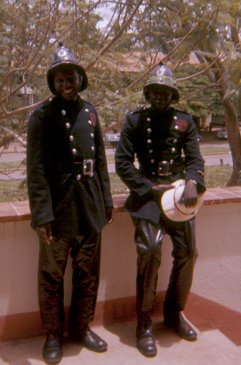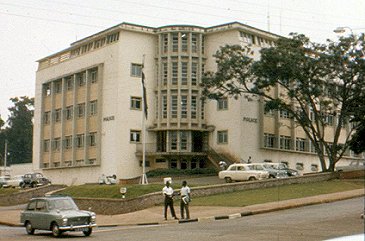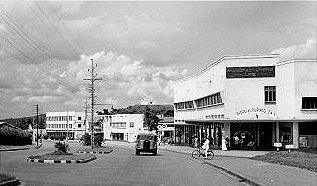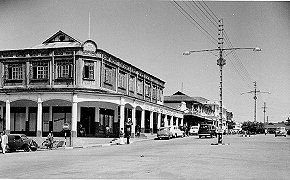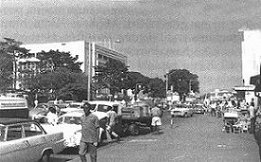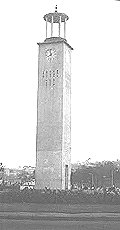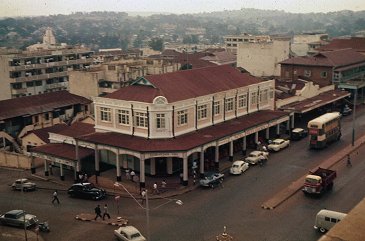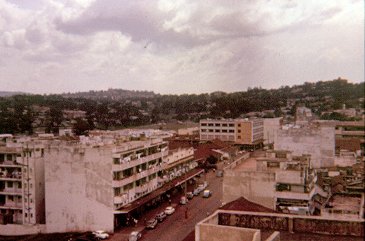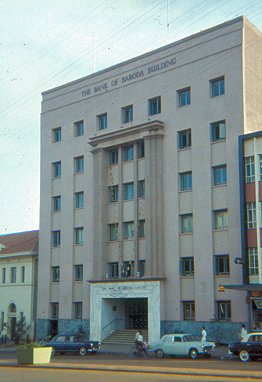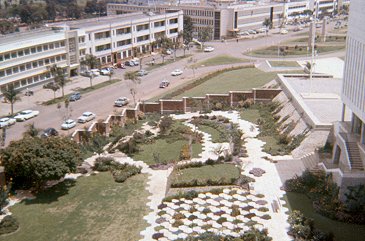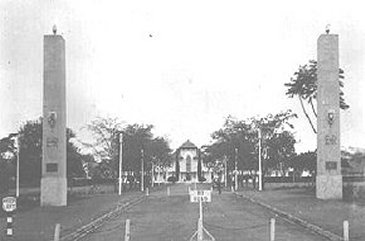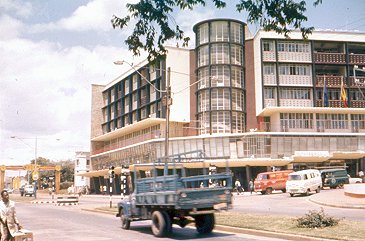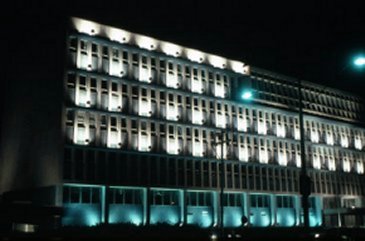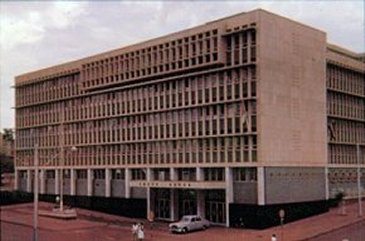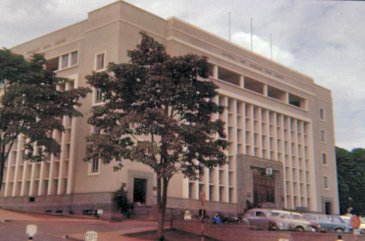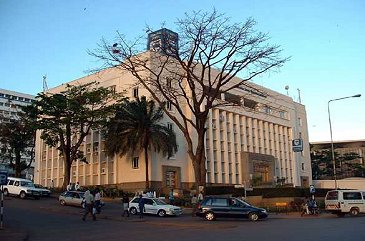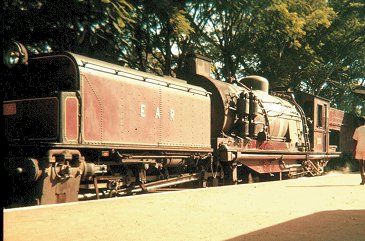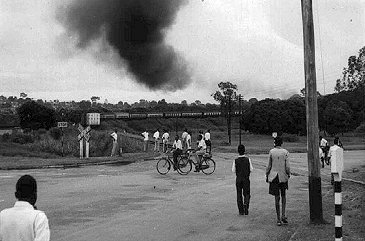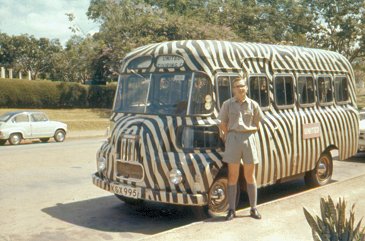|
Kampala - 1960-62 |
||
|
|
||
|
Aerial view of Kampala (1961) - PHOTO Uganda Department of Information - showing the administrative centre with Parliament Building centre right |
||
|
|
||
|
A later view of Kampala after Independence. Entebbe Road runs diagonally from the bottom of the picture to its junction with City Road between Motor Mart and Barclays Bank. The large tower (top centre) is the Apollo Hotel which dwarfs the Speke Hotel in front of it. PHOTO via Oliver Keeble |
||
|
|
|
|
|
|
||
|
Kampala Fort - PHOTO John Garside |
||
|
|
||
|
The view over the city from Kampala Fort - PHOTO John Garside |
||
|
|
|
|
| Kibuli Mosque on the hill of the same name was the city's most prominent landmark - PHOTOs John Garside | ||
|
|
|
|
| Anglican Namirembe Cathedral (left) and Roman Catholic Rubaga Cathedral (right) PHOTOs John Garside | ||
|
|
|
|
|
Kampala is built on many hills - the view from Kibuli (left) and the view from Kololo (right) PHOTOs Malcolm McCrow |
||
|
|
||
| Looking towards the Lukiko - the Kabaka's residence. PHOTO John Garside | ||
|
|
||
|
Looking towards the Bulange - the Buganda Parliament. PHOTO John Garside |
||
|
|
||
|
The Bulange PHOTO Malcolm McCrow |
||
|
|
|
|
|
Parliament Buildings - PHOTO (left) Uganda Department of Information (right) Malcolm McCrow |
||
|
|
|
|
|
National Theatre of Uganda (left) PHOTO Malcolm McCrow. Mulago Hospital under construction in 1962 was state of the art and on par with anything in the UK PHOTO John Garside |
||
|
|
|
|
|
Makere University in 1962 and in 2003 - PHOTOs Malcolm McCrow (left} Oliver Keeble (right) |
||
|
|
|
|
|
Nakivubu Stadium during a motorcycle event (left) PHOTO John Garside. Jubilee Park (right) was to be the site for the Uganda Independence Statue -see below. PHOTO Malcolm McCrow |
||
|
|
The Imperial Hotel (left) - PHOTO Malcolm McCrow |
|
|
|
|
|
|
From the 1961 brochure. The Lounge (right) overlooked Jubilee Park - PHOTOs Imperial Publicity Brochure. |
||
|
|
|
|
|
The Imperial Hotel (left) and the Shopping Arcade beneath it (left and right) which housed the barber Maison Victor who displayed certificates from various celebrities including the Aga Khan. PHOTOs Malcolm McCrow |
||
|
|
The unflattering traditional uniform for waiters in 1960 (left). September 1960, dinner in the Imperial Hotel. PHOTO Malcolm McCrow |
|
|
|
|
|
|
The EAR&H Scammell (identical to those used by British Railways) passes along Shimoni Road (left) . Kampala's Speke Hotel (right) in Shimoni Road taken from the flats which stood on the site of the Apollo Hotel - see below (left) PHOTOs Malcolm McCrow |
||
|
|
|
|
|
Kampala's third hotel at the time was the Silver Springs (left) - PHOTO Uganda Department of Information - which was intended to accommodate passengers from the flying boats making an over-night stop at Port Bell. An Empire flying boat moored at Port Bell (right) - PHOTO Imperial War Museum. The last flying boat to operate to South Africa and through Port Bell departed Southampton on 3rd November 1950. |
||
|
|
||
|
The Silver Springs Hotel was the only hotel in Kampala to boast a swimming pool - PHOTO Daphne Seager |
||
|
|
||
|
Gathered round the swimming pool at Silver Springs Hotel as the evening shadows lengthen - PHOTO Daphne Seager |
||
|
|
||
|
View from the high diving board at Silver Springs - PHOTO Daphne Seager |
||
|
|
|
|
|
Graham Wallace kept these tickets from 1971 - for the Bamboo Grove (Silver Springs) and for the Delite Cinema in Kampala. The Delite was by the Railway Station. There were at that time three other cinemas - the Norman, the Odeon and the Nita. |
||
|
The Apollo Hotel under construction (above) - on the site of the flats shown below The Uganda Independence Statue (right) PHOTOs - Oliver Keeble |
|
|
|
|
|
|
|
The flats in Shimoni Road which stood on the site of the Apollo Hotel - PHOTOs Malcolm McCrow |
||
|
No Fire! Just the result of the lady who lived in the top flat locking herself out. The Fire Officer who lived next door phoned for a ladder and the fire crew obviously intended to impress him! PHOTOs Malcolm McCrow |
|
|
|
|
|
|
|
Police Headquarters (left). The Post Office and, in the four storey building next door, the telephone exchange (right) PHOTOs Malcolm McCrow |
||
|
|
|
|
|
Kampala Road looking towards the station (left) and The Uganda Printers (right) PHOTOs - Ian Hamilton Post Card Collection. |
||
|
|
|
|
|
Looking East from Drapers (above) - PHOTO Oliver Keeble. The Clock Tower on the Entebbe Road (right) PHOTO Malcolm McCrow |
||
|
|
|
|
|
The Uganda Printers viewed from the National and Grindlay's Bank. Among the destinations for the Municipal Bus were Port Bell and Channel Street. Kampala backstreet running parallel to City Road (right) PHOTOs Malcolm McCrow |
||
|
|
|
|
| The Bank of Baroda (left). Motor Mart, at the top of Entebbe Road (right). PHOTOs Malcolm McCrow | ||
|
|
|
|
|
Views from the top of Parliament Tower - (left and right) PHOTOs Malcolm McCrow |
||
|
|
|
|
|
Town Hall (left) and Udyam Building (right) PHOTOs Malcolm McCrow |
||
|
|
|
|
|
Amber House (headquarters of the Uganda Electricity Board) floodlit for the Independence Celebrations (left) and Amber House again, by day (right) PHOTOs Malcolm McCrow |
||
|
|
|
|
|
Over 40 years separate these two views of the same building. From the National Bank of India when built, by 1960 it had become the National & Grindlays Bank (left). By 2003 the building - now the Stanbic Bank - has acquired a tower. PHOTOs (left) Malcolm McCrow (right) - Oliver Keeble |
||
|
|
|
|
|
Drapers (1943) Ltd (left) was Kampala's only department store. It had become a forlorn Uganda Duty Free Shop by 1979 - for those who the hard currency to pay for them. The streets of Kampala deserted (right) after the Tanzanian invasion of Uganda to rout Idi Amin. Still very much recognisable as the former Drapers, the store has been completely looted. PHOTOs - (left) Malcolm McCrow - (right) Oliver Keeble |
||
|
|
|
|
|
An additional six floors were added in the 1990ís and the building now houses the head office of Crane Bank. PHOTOs - Oliver Keeble |
||
|
|
|
|
|
Always, for me, associated with School Trains to Kenya - the railway station (left) and the now abandoned single track high level platform (right) at which a 58 Class awaits departure with the Mail Train. PHOTOs Malcolm McCrow |
||
|
|
|
|
|
After passing the level crossing near Central Workshops of the Ministry of Works, a Mail Train rounds the curve towards Jinja (left). A tourist safari bus outside the Speke Hotel (right). PHOTOs Jim Fowler (left) Jane McCrow (right) |
||
